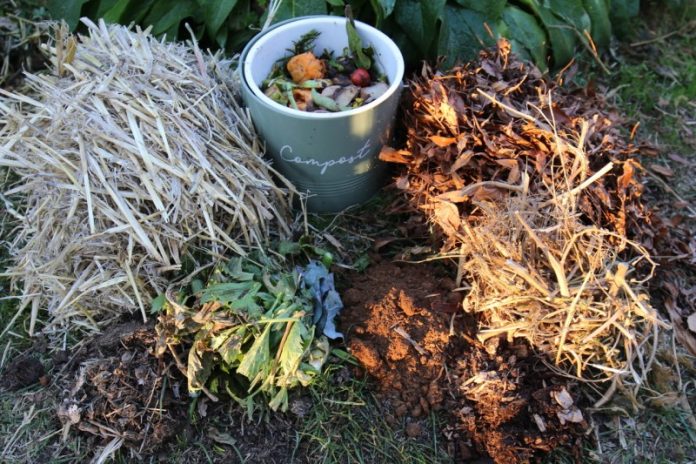I was recently asked just how much of those carbon-rich materials, like straw, autumn leaves and chopped up woody garden prunings, should we blend into our compost each time we add a bucket of food scraps from the kitchen.
At YIMBY we train hot composters to a level where they no longer need a recipe, but can intuitively ‘read’ what is needed to bring their compost into balance as they build, much like a chef blending ingredients ‘till the dish feels and tastes just right.
But when we are starting out, some measurements can be helpful.
Ideal composts have a starting carbon to nitrogen ratio of 25-30 parts carbon to one part nitrogen. Now, this doesn’t mean we add 27 buckets of carbon-rich straw to every one bucket of nitrogen-rich food scraps, though it is an understandable mistake to make. Even food scraps (like all living things) will be mostly made of carbon, but will have a higher nitrogen count, at about 15 carbon to 1 nitrogen, than straw will, at about 80:1.
A good rough measure is to go for equal weights. A bucket of food scraps can be pretty heavy, so it will probably be equivalent weight to at least two buckets of straw, stuffed in tight. Blended together, this will be closer to the ideal balance we are aiming for.
However, we’ll make a higher quality compost if one of those buckets of straw is replaced with half a bucket of dry autumn leaves and half a bucket of chopped up woody garden prunings. Now we have a recipe that gets the carbon nitrogen ratio right and also gets a better moisture and texture balance too.
Add a few more ‘just’ nitrogen-rich ingredients, like horse manure and coffee, with perhaps some richer nitrogen sources like chopped green grass or leaves and layer them up with equivalent weights of more of our carbon blend (straw, autumn leaves and chopped up woody garden prunings, with perhaps a sprinkling of aged wood chips) and now we have a very good compost recipe.
But, if we follow that recipe slavishly, and miss the fact that our food scraps might be very high in nitrogen (say lots of meats and greens) and that our ‘straw’ was actually pea straw (which is more like 30:1), then our recipe will be too nitrogen rich and will
become stinky and possibly too heavy and airless.
So, before we feed our composts, regardless of recipe, it is worth taking a garden fork or compost screw and lightly lifting up what we added last time and have a look and a smell, and even a feel, so we can start to ‘read’ what is and isn’t working in our pile. We can then adjust our recipe to respond to what we did last time.
A recipe can be a great way to get us started, but there is no substitute for paying attention to what is happening in our pile.
– Joel Meadows works with *Yes In My Back Yard, (YIMBY), a community-scale composting initiative in Castlemaine and surrounds. Send questions or comments to hello@yimbycompost.com, or to book in for a compost workshop.








